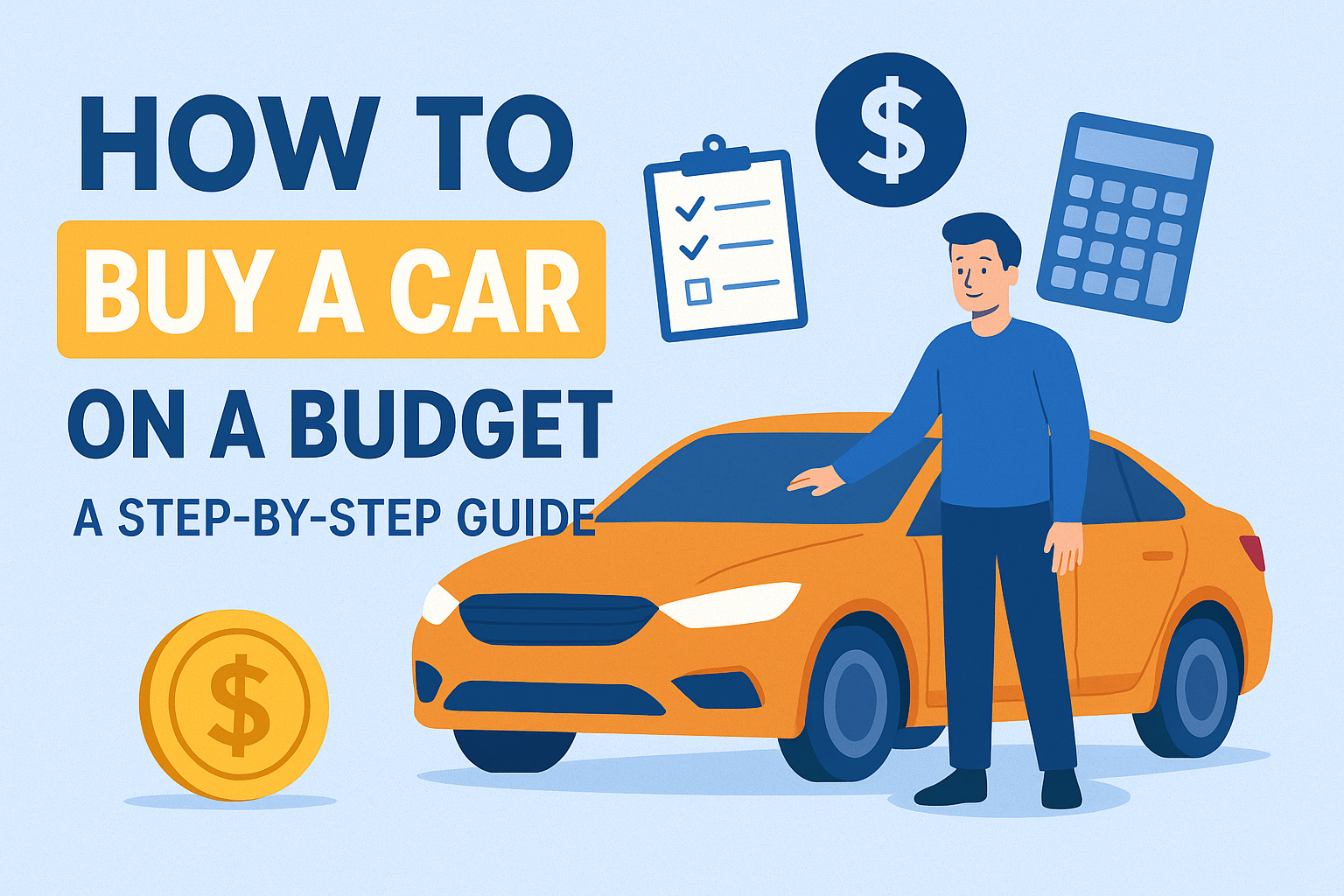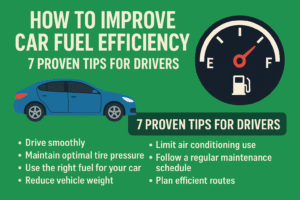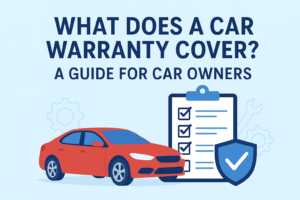Buying a car is one of the most significant purchases you’ll make, but it doesn’t have to drain your savings. Whether you’re eyeing a sleek new sedan, a reliable used SUV, or an eco-friendly electric vehicle (EV), knowing how to buy a car on a budget can save you thousands while ensuring you drive away in a vehicle that meets your needs. This step-by-step guide offers car buying tips to help you navigate the process, from setting a budget to mastering negotiation strategies. Drawing insights from the BuyingCarAssist Ultimate Car Care Guide, we’ll show you how to make a smart, budget-friendly purchase without compromising quality.
With rising car prices and economic uncertainties in 2025, budget-conscious car buying is more important than ever. Our expert advice, backed by BuyingCarAssist’s team of automotive professionals, will empower you to make informed decisions and avoid common pitfalls. Ready to hit the road without breaking the bank? Let’s get started!
Want personalized advice for your car purchase? Book a consultation with BuyingCarAssist to find the perfect car within your budget!
Why Buying a Car on a Budget Matters
Purchasing a car involves more than just the sticker price. Hidden costs like financing, insurance, maintenance, and fuel can quickly add up, turning your dream car into a financial burden. A 2024 global automotive study by Cox Automotive found that 68% of car buyers regret not factoring in total ownership costs, with many overspending by 20-30% due to poor planning. By following a budget car purchase guide, you can:
- Save Money: Reduce upfront costs and long-term expenses.
- Avoid Debt: Choose financing options that fit your financial situation.
- Maximize Value: Get a reliable car with features you need at a price you can afford.
- Increase Resale Value: Budget-friendly cars often retain value better with proper care.
This guide will walk you through car buying tips to ensure you stay within your budget while driving away happy.
Step-by-Step Guide to Buying a Car on a Budget
Step 1: Set a Realistic Budget
Why It’s Important: A clear budget keeps you focused and prevents overspending. It should account for the car’s purchase price, taxes, registration, insurance, and maintenance.
How to Set a Budget:
- Assess Your Finances: Calculate your monthly income and expenses. Aim to spend no more than 20% of your monthly income on car-related costs (loan payments, insurance, fuel).
- Determine Purchase Price: A common rule is to keep the car’s price below 50% of your annual income. For example, if you earn $40,000/year, aim for a car under $20,000.
- Include Additional Costs:
- Taxes and registration: 5-10% of the car’s price.
- Insurance: $500-$2,000/year, depending on the car and driver profile.
- Maintenance: $500-$1,500/year for budget-friendly models.
- Use Tools: Try the BuyingCarAssist Car Affordability Calculator to estimate your budget and avoid surprises.
Pro Tip: Set aside a 10% buffer for unexpected costs like repairs or accessories. For example, a $15,000 car budget should include $1,500 for contingencies.
Savings Estimate: Sticking to a budget can save $2,000-$5,000 by avoiding overspending.
Step 2: Research Affordable Cars
Why It’s Important: Not all cars are created equal when it comes to affordability. Researching budget-friendly models ensures you get reliability, fuel efficiency, and low maintenance costs.
How to Research:
- New vs. Used Cars:
- New Cars: Offer warranties and modern features but cost more upfront. Look for budget models under $20,000, like the Kia Picanto or Suzuki Ignis.
- Used Cars: Can save 30-50% compared to new cars. Aim for models 2-5 years old with low mileage (under 50,000 miles) and a clean service history.
- Prioritize Reliability: Choose brands known for durability, such as Toyota, Honda, or Suzuki, which have lower repair costs.
- Check Fuel Efficiency: Opt for cars with 20+ mpg (8.5+ kmpl) to save on fuel. Hybrids like the Toyota Corolla Hybrid are excellent for budget buyers.
- Verify Resale Value: Cars like the Honda Civic retain value better, saving money when you sell.
Pro Tip: Use online platforms like Kelley Blue Book or AutoTrader to compare prices and read reviews. For expert guidance, consult BuyingCarAssist to find budget-friendly models tailored to your needs.
Savings Estimate: Choosing a used car over a new one can save $5,000-$10,000 upfront.
Step 3: Explore Financing Options
Why It’s Important: Financing can make or break your budget. Understanding loans, leases, and payment plans helps you avoid high interest rates and long-term debt.
Financing Options:
- Car Loans:
- Shop around for low interest rates (4-7% APR is ideal).
- Aim for a loan term of 36-48 months to minimize interest costs.
- Use the BuyingCarAssist Car Loan Payment Calculator to estimate monthly payments.
- Leasing:
- Lower monthly payments but no ownership at the end.
- Ideal for those who want a new car every 2-3 years.
- Compare leasing vs. buying with our Lease vs. Buy Calculator.
- Cash Purchase: If possible, pay upfront to avoid interest. Negotiate discounts for cash payments, which can save 5-10% off the sticker price.
- Trade-Ins: Sell your old car to offset costs. Use the BuyingCarAssist Trade-In Value Estimator for a fair estimate.
Pro Tip: Get pre-approved for a loan before visiting dealerships to strengthen your bargaining power. Avoid “buy here, pay here” dealerships with high interest rates (15%+).
Savings Estimate: Choosing a low-interest loan or cash purchase can save $1,000-$3,000 in interest over the loan term.
Step 4: Master Negotiation Strategies
Why It’s Important: Negotiating can lower the car’s price by 5-15%, saving hundreds or thousands of dollars.
Negotiation Tips:
- Research Market Prices: Check the fair market value of your desired car using tools like Edmunds or Kelley Blue Book.
- Start Low: Offer 5-10% below the asking price, but be realistic based on market data.
- Focus on Total Cost: Negotiate the out-the-door price, including taxes and fees, not just the sticker price.
- Avoid Add-Ons: Decline unnecessary dealer add-ons like extended warranties or paint protection unless they add real value.
- Walk Away if Needed: Be prepared to leave if the deal doesn’t meet your budget. This shows you’re serious and may prompt better offers.
Pro Tip: Timing matters. Shop at the end of the month or during holiday sales (e.g., year-end clearance) when dealers are motivated to meet quotas.
Savings Estimate: Effective negotiation can save $500-$2,000 on the purchase price.
Step 5: Evaluate Total Ownership Costs
Why It’s Important: The purchase price is just the beginning. Factoring in insurance, maintenance, fuel, and depreciation ensures you stay within budget long-term.
Key Costs to Consider:
- Insurance: Budget models like the Suzuki Swift have lower premiums ($500-$1,000/year) than luxury cars ($2,000+).
- Maintenance: Choose cars with low repair costs (e.g., Toyota Yaris, $500-$1,000/year). Learn more in our Ultimate Car Care Guide.
- Fuel: Opt for fuel-efficient cars (20+ mpg) or hybrids to save $500-$1,500/year on fuel.
- Depreciation: Budget cars like the Honda Fit depreciate slower, retaining 60-70% of value after 5 years.
Pro Tip: Use the BuyingCarAssist Fuel Cost Calculator to estimate fuel expenses based on your driving habits.
Savings Estimate: Choosing a car with low ownership costs can save $2,000-$5,000/year.
Top Budget-Friendly Cars for 2025
Selecting the right car is critical for staying within budget. Below is a table of the top 5 budget-friendly cars for 2025, based on purchase price, fuel efficiency, and maintenance costs.
| Car Model | Brand | Starting Price | Fuel Efficiency | Avg. Annual Maintenance | Why It’s Budget-Friendly |
| Kia Picanto | Kia | $14,000 | 25 mpg | $500-$800 | Affordable parts, reliable |
| Suzuki Ignis | Suzuki | $13,500 | 28 mpg | $400-$700 | Low price, high mileage |
| Toyota Yaris | Toyota | $16,000 | 32 mpg | $600-$900 | Durable, low repair costs |
| Honda Fit | Honda | $15,500 | 30 mpg | $500-$800 | High resale value |
| Hyundai Venue | Hyundai | $17,000 | 27 mpg | $600-$1,000 | Modern features, affordable |
Note: Prices are approximate and vary by region and trim level. Always check local listings for accurate pricing.
Not sure which car fits your budget? Use our Car Affordability Calculator to find the perfect model!
Common Mistakes to Avoid When Buying a Car on a Budget
Avoid these pitfalls to ensure a smart purchase:
- Ignoring Total Costs: Focusing only on the purchase price can lead to high insurance or maintenance expenses.
- Skipping Research: Not comparing models or prices may result in overpaying.
- Rushing the Process: Pressure from dealers can lead to hasty decisions. Take time to evaluate options.
- Overfinancing: Long loan terms (60+ months) increase interest costs. Stick to 36-48 months.
- Neglecting Inspections: For used cars, always get a mechanic’s inspection to avoid hidden repair costs ($1,000+).
Avoid costly mistakes with expert advice. Book a consultation with BuyingCarAssist to make a smart purchase!
How BuyingCarAssist Can Help
At BuyingCarAssist, we’re dedicated to helping you buy a car on a budget without stress. Our Ultimate Car Care Guide offers tips to maintain your car affordably, while our expert consultations (starting at $25) provide personalized advice on car selection, financing, and negotiation.
Why Choose BuyingCarAssist?
- Expert Guidance: Our team of car experts helps you find budget-friendly cars and avoid pitfalls.
- Free Tools: Use our Car Loan Payment Calculator, Trade-In Value Estimator, and more to plan your purchase.
- Global Reach: Trusted by customers in the US, UK, Canada, Australia, and UAE, as seen in our testimonials.
Ready to buy your dream car on a budget? Book a consultation with BuyingCarAssist today!
Frequently Asked Questions
Q: How much should I budget for a car purchase?
A: Aim for a car price below 50% of your annual income, plus 5-10% for taxes and registration. Use our Car Affordability Calculator for a precise estimate.
Q: Is it better to buy a new or used car on a budget?
A: Used cars save 30-50% upfront, but new cars offer warranties. Compare options with our Lease vs. Buy Calculator.
Q: How can I negotiate a better car price?
A: Research market prices, start with a low offer, and focus on the out-the-door price. Learn more in our Car Consultation Services.
Q: What are the cheapest cars to maintain?
A: Models like the Kia Picanto and Suzuki Ignis have low maintenance costs ($400-$800/year). See our table above for details.
Q: How does BuyingCarAssist help with budget car buying?
A: Our experts provide tailored advice on car selection, financing, and maintenance. Check out our Ultimate Car Care Guide for long-term savings.
Conclusion
Buying a car on a budget doesn’t mean sacrificing quality or reliability. By following this step-by-step guide to buying a car on a budget, you can set a realistic budget, research affordable cars, explore financing options, master negotiation, and evaluate ownership costs. These car buying tips ensure you drive away in a vehicle that fits your needs and wallet. With BuyingCarAssist’s Ultimate Car Care Guide and expert consultations, you’ll have the tools and support to make a smart, budget-friendly purchase.
Don’t let high costs stop you from owning your dream car. Book a consultation with BuyingCarAssist now and start your journey to affordable car ownership!







